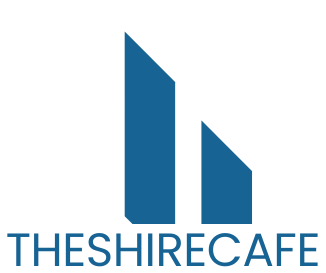The housing market is a dynamic landscape, constantly shifting in response to economic factors, consumer behavior, and societal changes. As buyers and sellers navigate this ever-evolving terrain, understanding current trends becomes essential for making informed decisions. From fluctuating interest rates to evolving buyer preferences, the trends shaping the housing market can significantly impact property values and investment opportunities.
In recent years, the market has seen a surge in demand, driven by low mortgage rates and a desire for more spacious living arrangements. However, challenges such as inventory shortages and rising prices have created a complex environment for potential homeowners. By staying informed about these trends, individuals can better position themselves in a competitive market and seize opportunities as they arise.
Table of Contents
ToggleOverview of Housing Market Trends
Current housing market trends reflect a blend of economic conditions and shifting consumer preferences. Prices increased significantly over the past few years, driven by surging demand and limited inventory. According to the National Association of Realtors, home prices rose by approximately 15% in 2021, marking the fastest annual gain since 2005.
Interest rates have played a pivotal role in shaping buyer behavior. The Federal Reserve’s low-rate environment has encouraged many potential homeowners to enter the market. In 2022, though, a gradual increase in interest rates affected purchasing power, leading some buyers to reconsider their options.
Additionally, there’s a notable shift toward suburban and rural living, as remote work influences choices. The desire for larger homes with dedicated office space has become a priority for many buyers. Higher-priced urban properties faced increased competition from affordable suburban homes, reflecting changing lifestyles.
Rental markets also share trends with home buying. Rental prices experienced a rise due to low vacancy rates and increased demand. In several metropolitan areas, rental rates climbed by over 10% in 2021, further complicating the accessibility of affordable housing.
Investors are increasingly watching for emerging trends. Markets with growing job opportunities and infrastructure development attract investor interest. Data shows suburban areas within commuting distance of major urban centers gain popularity, making them attractive for both buyers and investors alike.
Understanding these housing market trends provides valuable insights for those engaged in real estate. It enables effective strategies for navigating investments and home purchases and highlights the need to remain aware of changing dynamics in the housing landscape.
Current State of the Housing Market

Current housing market dynamics reveal significant trends influenced by economic factors and evolving consumer preferences. These trends, characterized by rising prices and varied regional shifts, are essential for understanding today’s competitive landscape.
Regional Variations
Regional variations in the housing market demonstrate marked differences in price fluctuations and buyer behavior. In metropolitan areas, home prices have surged by nearly 18% compared to suburban regions, where growth is around 12%. Cities such as Austin and Phoenix experience strong demand due to job opportunities and lifestyle appeal. Conversely, Midwest markets such as Cleveland and Detroit show more stability, with slower price increases below 5%. These distinctions underscore the importance of localized data for both buyers and investors.
Demand and Supply Factors
Demand and supply factors play a critical role in shaping the current housing market. Low mortgage rates, averaging around 3.2% in 2021, drove demand among first-time buyers and investors. Simultaneously, inventory shortages hindered supply, with available homes decreasing by 30% year over year. This imbalance has contributed to competitive bidding, often resulting in homes selling above asking price. The desire for larger living spaces continues to grow, particularly in suburban areas, influenced by lifestyle changes and remote work flexibility. Understanding these demand and supply dynamics is vital for anticipating market shifts and investment opportunities.
Key Influences on Housing Market Trends
Various factors influence housing market trends, shaping the dynamics of buying and selling properties. Recognizing these influences enables potential buyers and investors to make informed decisions.
Economic Indicators
Economic indicators directly impact the housing market, reflecting the overall health of the economy. Key indicators include:
- Gross Domestic Product (GDP): A growing GDP suggests economic expansion, leading to increased consumer confidence and higher home prices.
- Unemployment Rate: Low unemployment rates correlate with job stability, encouraging home purchases.
- Inflation Rates: High inflation can erode purchasing power, affecting affordability in the housing sector.
Monitoring these indicators provides insight into market trends and potential future movements.
Interest Rates and Financing
Interest rates play a crucial role in shaping housing market trends. Lower interest rates generally stimulate demand, as they reduce monthly mortgage payments. Notable aspects include:
- Historical Averages: In 2021, mortgage rates averaged around 3.2%, promoting homebuying and encouraging investment.
- Gradual Increases: A rise in interest rates can lead to buyer hesitation, as seen in 2022, when rates began to climb, causing some potential homeowners to reconsider their purchases.
- Financing Options: Various financing options, including FHA loans and conventional mortgages, can affect accessibility. The right financing can enhance affordability for new buyers.
Understanding these aspects allows stakeholders to anticipate changes in the housing market.
Future Projections for the Housing Market
Future projections for the housing market indicate a mix of optimism and caution due to various economic factors and market dynamics.
Expert Opinions
Experts predict a moderate increase in home prices, stabilizing around 5% annually over the next few years. Analysts point to continued low inventory levels as a driving force behind price growth, exacerbated by ongoing demand from first-time homebuyers and investors. The National Association of Realtors anticipates a gradual rise in interest rates, which may encourage buyers to act sooner before borrowing costs increase. Additionally, economists report that shifts towards multi-family housing could occur as affordability challenges persist, potentially creating a more balanced market over time.
Potential Market Challenges
Several challenges may hinder housing market growth. Inventory shortages remain a significant issue, with new home construction not keeping pace with demand. The Mortgage Bankers Association cites potential declines in housing affordability due to persisting inflation, which could limit purchasing power for many buyers. Additionally, geopolitical tensions and supply chain disruptions pose risks for developers, affecting timelines and costs for new construction projects. Experts underline the need for increased supply and infrastructure development to match the rising demand and sustain market recovery.
The housing market remains a complex landscape shaped by various economic and social factors. As demand continues to rise amidst low inventory and shifting buyer preferences, stakeholders must stay informed about these trends. The interplay between interest rates and consumer behavior will play a pivotal role in shaping future market conditions.
With experts predicting moderate price increases, it’s crucial for potential buyers and investors to navigate this evolving environment carefully. Understanding regional variations and economic indicators can provide valuable insights for making informed decisions. As the market adapts, proactive strategies will be essential for those looking to succeed in this dynamic arena.



